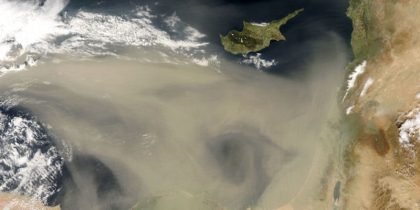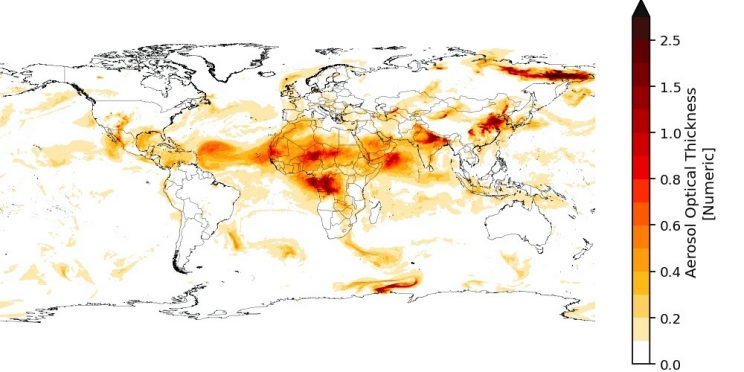Global Ensemble Forecast System (GEFS) Upgrade Released
GEFS Upgrade Includes FV3 Dynamical Core and ARL developed FENGSHA dust emission scheme
September 24, 2020
Margaret Simon

As dust from North Africa and the Middle East swirls over the Mediterranean Sea, one of NOAA’s newest models provides a more accurate forecast of where the air quality impacts of the dust will be felt.
NOAA’s Global Ensemble Forecast System (GEFS) was upgraded on September 23, 2020 by the National Weather Service. GEFSv12 now uses the Finite-Volume Cubed Sphere (FV3) dynamical core and includes an ensemble member that deterministically predicts global aerosol distributions. The global aerosol model, referred to as GEFS-Aerosol, was created through a collaboration between ARL, the Global Systems Laboratory (GSL), the Chemical Sciences Laboratory (CSL), the Center for Satellite Applications and Research (STAR) in the National Environmental Satellite, Data and Information Service (NESDIS), and the NWS’s Environmental Modeling Center (EMC).
ARL was responsible for implementing the FENGSHA dust emission scheme into GEFS-Aerosol and evaluating its performance against available surface and satellite measurements and as compared to other models and model reanalyses and ensembles. The FENGSHA scheme was initially developed in ARL by Dr. Daniel Tong and has been used operationally in the National Air Quality Forecasting Capability (NAQFC) of the NWS for several years. Dr. Barry Baker led the effort to implement FENGSHA into GEFS-Aerosol and was able to demonstrate its superior performance in estimating dust emissions across the globe. More information on the new global aerosol model can be found at: https://research.noaa.gov/article/ArtMID/587/ArticleID/2651/New-NOAA-research-model-improves-dust-air-quality-forecasts, while additional information on GEFSv12 is available at https://www.noaa.gov/media-release/noaa-upgrades-global-ensemble-forecast-system.

Global aerosol optical depth as predicted by GEFS-Aerosol.

